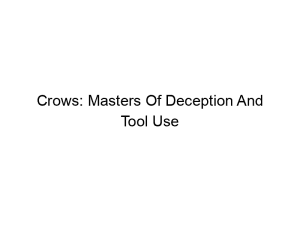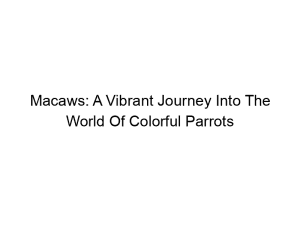Want to enrich your feathered friend’s life and strengthen your bond? Making DIY bird toys is a rewarding and surprisingly easy way to keep your pet bird happy, healthy, and mentally stimulated. This comprehensive guide will walk you through everything you need to know, from choosing safe materials to crafting engaging designs. You’ll learn about different toy types, safety considerations, and how to tailor your creations to your bird’s specific needs and preferences. Let’s dive in!
Birds, especially those kept as pets, require mental and physical stimulation to prevent boredom, stress, and destructive behaviors. Enrichment promotes natural behaviors like foraging, climbing, and exploring. A bored bird is an unhappy bird, and this unhappiness can manifest as feather plucking, excessive vocalization, or aggression.
Different bird
species have different needs and preferences. A small finch will have different play requirements than a large macaw. Consider your bird’s size, natural behaviors, and energy level when designing toys. Research your specific species to understand their innate instincts and curiosities.
Types of Enrichment
Bird enrichment encompasses a wide range of activities and toys, broadly categorized into foraging toys, puzzle toys, and physical activity toys. Foraging toys encourage natural foraging behaviors, puzzle toys challenge their problem-solving skills, and physical activity toys help them burn energy and strengthen their muscles.
Safe Materials for DIY Bird Toys: Avoiding Hazards
Toxic Materials to Avoid
Avoid using materials that could be toxic if ingested, such as lead-based paint, treated wood, or certain plastics. Always opt for natural, non-toxic materials. This is crucial for the health and well-being of your pet bird.
Recommended Safe Materials
Excellent choices include untreated wood (such as balsa, pine, or aspen), natural fibers (like sisal rope, cotton rope, and seagrass), and stainless steel or untreated metal hardware. Always thoroughly check any material for splinters or loose parts.
Choosing the Right Hardware
When incorporating hardware, ensure all parts are securely fastened and made of non-toxic materials. Avoid small parts that could be easily swallowed, and regularly inspect the toys for any damage or loose pieces.
Easy DIY Bird Toy Ideas for Beginners
The Simple Paper Chain
Cut strips of colourful, non-toxic paper (cardboard is a good choice) and link them together to create a long chain. Birds can chew, shred, and play with this simple toy. Change the colors regularly for added stimulation.
The Cardboard Box Adventure
A simple cardboard box can become a fantastic bird playground. Cut out various sized holes, tunnels, and add other safe items for them to explore. Ensure all edges are smooth to avoid injury.
The Foraging Bottle
Fill a clear plastic bottle with small, safe treats and make small holes for your bird to retrieve the treats. Ensure the bottle is thoroughly cleaned and free of any harmful chemicals.
Intermediate DIY Bird Toys: Adding Complexity
The Wooden Block Puzzle
Drill small holes into a wooden block and insert small, safe treats or toys. Your bird will have to use their beak and claws to access the rewards. Make sure to secure any loose items properly.
The Sisal Rope Ladder
Create a sturdy ladder using sisal rope and small wooden dowels. This provides both a climbing challenge and a chewing opportunity. Ensure the knots are secure and the rope is free from any loose strands.
The Natural Branch Playground
Collect sturdy branches from trees (avoid treated or toxic trees like cedar or redwood), scrub them thoroughly, and attach them to a sturdy base. This provides a natural and engaging climbing and chewing experience.
Advanced DIY Bird Toys: Challenging Their Minds
The Treat Dispensing Puzzle
Design more complex puzzles involving multiple compartments and mechanisms to dispense treats. This challenges their problem-solving skills and keeps them mentally engaged for longer periods.
The Interactive Food Maze
Create a maze-like structure using safe tubes, cups, and compartments to hide food. This enhances their foraging skills and mental stimulation.
The Hanging Toy Garden
Combine various types of toys into one large, complex structure, incorporating different materials and textures. This offers variety and ensures extended playtime.
Designing for Different Bird Sizes and Species
Toys for Small Birds (Finches, Canaries)
Focus on small, lightweight toys with fine details. Avoid large toys that could overwhelm or injure them. Smaller treats and finer foraging materials are ideal.
Toys for Medium Birds (Cockatiels, Conures)
A blend of smaller, more delicate toys and slightly larger, sturdier items works well. Consider incorporating foraging toys with moderate difficulty.
Toys for Large Birds (Macaws, Amazons)
Large, durable toys made from sturdy materials are necessary. These birds have strong beaks and claws and require toys that can withstand significant chewing and manipulation. Large treats and puzzle toys with intricate mechanisms are suitable.
Maintaining and Replacing DIY Bird Toys
Regular Inspection and Cleaning
Regularly inspect toys for any damage or loose parts that your bird could ingest. Clean toys regularly with bird-safe cleaning solutions to prevent the buildup of bacteria and fungi.
Signs of Wear and Tear
Replace toys that show significant signs of wear and tear, such as fraying rope, broken wood, or loose hardware. This prevents potential hazards to your bird’s safety.
Rotating Toys for Continued Engagement
Rotate toys regularly to keep your bird interested and prevent boredom. Store away certain toys for a while and then reintroduce them later to create a sense of novelty.
Common Mistakes to Avoid When Making DIY Bird Toys
Using Unsafe Materials
Avoid using any material that could be toxic or harmful if ingested by your bird. Always prioritize safety when selecting materials.
Creating Toys with Small, Loose Parts
Ensure all parts are securely fastened and avoid creating toys with small parts that could be easily swallowed. This is critical to prevent potential choking hazards.
Ignoring Bird-Specific Needs
Tailor your toy designs to your bird’s species, size, and preferences. A toy suitable for a large macaw may be inappropriate or dangerous for a small finch.
The Benefits of DIY Bird Toys
Cost-Effectiveness
Making your own bird toys is significantly more cost-effective than buying commercially produced toys. You can create a wide variety of engaging toys using readily available and inexpensive materials.
Customization and Personalization
DIY bird toys allow you to tailor the toys to your bird’s individual preferences and needs. You can choose colors, materials, and designs that specifically appeal to your pet’s unique personality.
Strengthening the Bond
Creating and interacting with your bird while playing with a DIY toy can deepen your bond. It provides opportunities for interaction, bonding, and shared experiences.
Frequently Asked Questions
What are the most important safety considerations when making DIY bird toys?
Prioritize using non-toxic, bird-safe materials. Avoid anything that could be swallowed, and ensure all parts are securely fastened. Regularly inspect toys for wear and tear.
How often should I replace my bird’s DIY toys?
Replace toys showing signs of wear and tear immediately. For actively chewed toys, this might be every few weeks. Rotate toys every few months to maintain interest.
Can I use recycled materials for DIY bird toys?
Yes, but ensure the materials are clean, safe, and non-toxic. Thoroughly wash and inspect anything recycled before using it in a bird toy.
What are some signs that my bird is bored?
Signs of boredom include excessive feather plucking, aggression, repetitive movements, and decreased interaction. Provide a variety of stimulating toys and activities to combat boredom.
My bird seems uninterested in my DIY toys. What can I do?
Try different types of toys and materials, or incorporate treats within the toys to make them more appealing. Observe your bird’s behavior to identify their preferences.
How can I make my DIY bird toys more challenging?
Gradually increase the complexity of your designs by adding more compartments, mechanisms, or puzzles. Use smaller openings or require more manipulation to access treats.
Are there any online resources for DIY bird toy ideas?
Yes! Many websites, blogs, and YouTube channels offer countless DIY bird toy ideas and tutorials. Pinterest is also a great resource for visual inspiration.
Final Thoughts
Creating DIY bird toys offers a unique opportunity to enhance your feathered companion’s well-being and strengthen your bond. By following safe practices and considering your bird’s individual needs, you can craft engaging and stimulating toys that promote physical and mental enrichment. Remember to regularly inspect and replace toys as needed, and always prioritize safety above all else. Creating your own toys is a rewarding process, allowing you to observe your bird’s unique personality and tailor their enrichment to their specific preferences. So gather your materials, get creative, and enjoy the process of enriching your bird’s life with handmade, customized toys! You’ll be amazed by the positive impact it has on their happiness and overall health. Now go ahead and start crafting!




